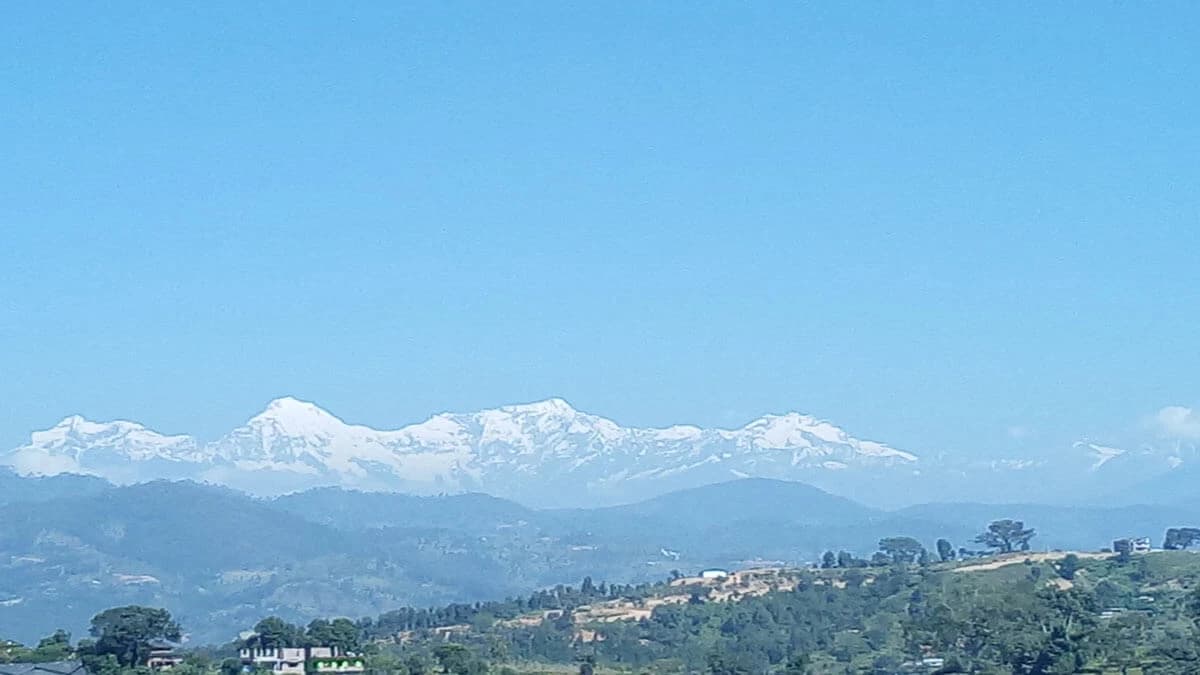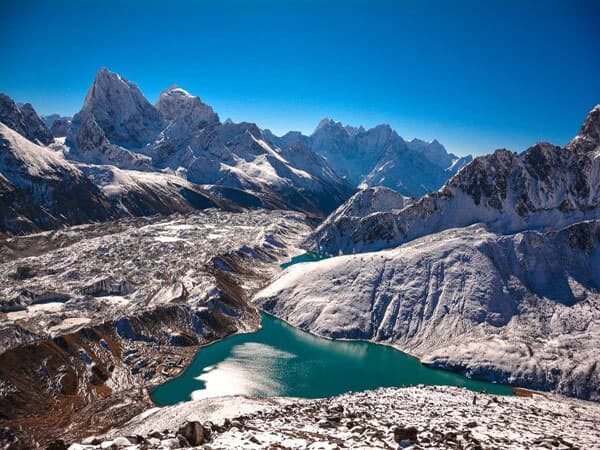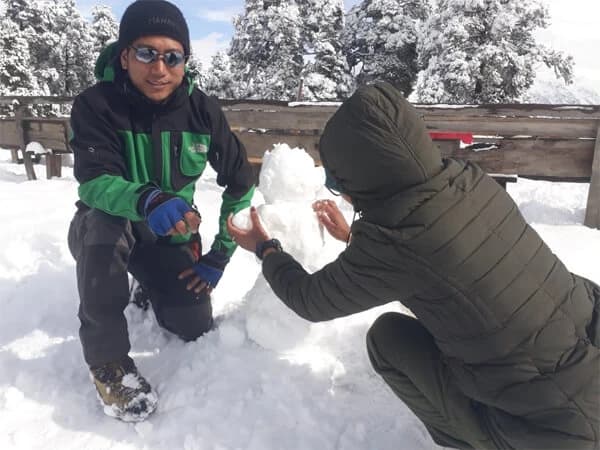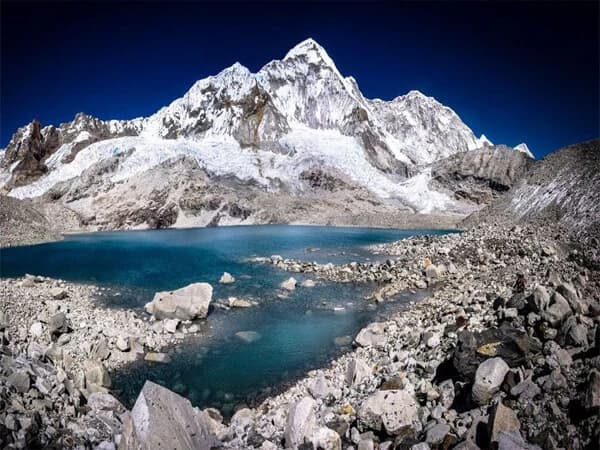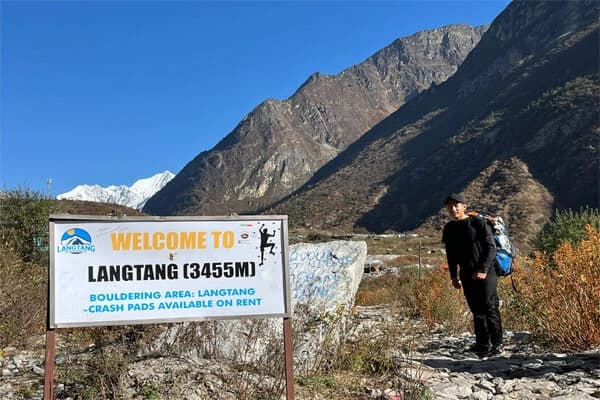Ganesh Himal Trek is an off the beaten trip to the northern Himalayas from Kathmandu. It is just 70 kilometers away from the Capital City and located between Langtang region and Manaslu region. Despite its proximity to Pokhara and Kathmandu, Ganesh Himal Base Camp trek was introduced only in 2012.
Trekking Agencies’ Association of Nepal (TAAN) identified the cultural and natural attractions of this region that it could allure the trekkers. The Shamanic and Tibetan Buddhist culture of Ganesh Himal Ruby Valley trek matches with Tamang Cultural Heritage Trail of Langtang Valley. Hence, TAAN combined Langtang Valley trek with Ruby Valley trek so that the avid trekkers can have amazing lifetime experiences.
This trek can be started from 6 different points of Rasuwa, Nuwakot, Dhading and historical district Gorkha respectively. To begin it from Rasuwa, you have to walk past Langtang National Park and many Tamang ethnic villages. Ganesh Himal trek from Nuwakot takes you along the cultural Tamang villages and dense forests. Ganesh Himal trek moves across many ethnic villages and thick forests of local vegetation. Likewise, if you begin this trip from Aarughat or Gorkha Bazar, you move across Manaslu Conservation Area Project.
Ganesh Himal Ruby Valley trek is a combination of teahouse and camping trekking. As it is moderate type of trekking, even the novice trekkers can do without much difficulty. Except in excessive snowfall in winter and downpour in summer, this trek can be done throughout the year. Nevertheless, the best time for Ganesh Himal trek is spring and autumn.
The core objective of this blog is to give you maximum information about the major attractions of Ganesh Himal Ruby Valley trek. As mentioned earlier, it is a perfect combo of nature, culture and a bit adventure!
Himalayan Peaks
No matter, which route you follow, you will have a wonderful culture as well as wildlife and vegetation. Moreover, the snowcapped peaks of Langtang (7,234m), Ganesh Himal (7,422m), Manaslu (8,163m) and Annapurna (8,091m) are equally rewarding.
Ganesh Himal Massif is said to be one of the most beautiful mountains in the world. Ganesh I/Yangra (7,422m), Ganesh II (7,118m), Salasungo/Ganesh III (7,043m) and Pabil/Ganesh IV (7,104m) are the four major peaks of Ganesh Himal Massif.
Ruby Valley
Ruby Valley is named after the precious stone ‘Ruby’ that is found only in Ganesh Himal region in Nepal trekking. There are two major deposits of ruby: Chumar and Ruyil mines close to Borang Villages. In the past, ruby extraction was initiated but due to some technical problem, it has been stopped nowadays. Visiting this region lets you observe ruby and other valuable gemstones in their natural forms. However, one is not allowed to take these raw gemstones with them and it is illegal activity. If found so, they will be punished according to the existing law of Nepal.
Himalayan Passes
Ganesh Himal trek consists three Himalayan passes altogether. Beginning this trek from Betrawati, Rasuwa, you go across Sing La Pass (4,220m) and Pangsang Pass (3,842m) between Rupchet and Tipling villages. Another is Magne Goth Pass (2,950m) that is located between Laba Gaon and Tinsure.
Holy Lakes & Natural Waterfalls
Ganesh Himal Ruby Valley trek takes you to three different holy lakes for the Hindu pilgrims. Kalo Kunda (Black Lake) and Seto Kunda (White Lake) are situate nearby Ganesh Himal Base Camp (3,774m). As the names suggest, Kalo Kunda has black water and Seto Kunda has white water.
In Janai Purnima Festival and Maghe Sakranti, a large number of pilgrims visit these lakes. According to the Hindu followers, taking bath on these occasions cleanses sins committed knowingly or unknowingly. Another is Ganesh Kunda that lies between Kharka and Tatopani villages. It is not only naturally beautiful but also culturally significant as well.
Located nearly 300 meters above from Gatlang Village, there is Parvati Kunda (2,600m), which is one of the 109 kundas of Rasuwa district. It is one of the holy lakes that receive thousands of pilgrims during Janai Purnima Festival. This thousands of years old glacial lake is important wetland of Nepal. It is home for 25 wetland plants, 37 birds and 6 species of mammals.
Likewise, Ganesh Himal trek is an opportunity to witness many natural waterfalls as well. Tatopani Spring is the one that is believe to heal the skin diseases if any when you take bath. Next, the trekkers take bath in this naturally hot water to get rid of travel fatigue, muscle aches, etc.
Between Tinsure and Salangkot, there is Ganga Jamuna (twin sisters according to Hindu mythology) Spring. It is a amazingly beautiful spring jumping off from more than 200 meters high. Observing this waterfall is the best way to forget the hardships you face while walking along the less frequented trails.
Wildlife and Vegetation
Ganesh Himal Ruby Valley region doesn’t have any specific conservation area nor national park in itself. However, most often, Ganesh Himal trek route begins from Syabrubesi, the gateway to Langtang Valley trek or Kailash Mansarovar Yatra.
This route continues along Langtang Valley that lies in Langtang National Park. You know Langtang National Park is the first Himalayan conservation area and the fourth protected zone of Nepal. It is recognize for a wide variety of flora and fauna that have maintained good quality of biodiversity.
Moving along Tamang Cultural Heritage Trail, you get to Gatlang Village. Gatlang Village is one of the important cultural heritage having a unique Shamanic culture and tradition. Moreover, it is the junction that connects Langtang Valley with Ruby Valley trek. It is also an important section of the Great Himalayan Trail (1,700km) that extends between far east and far west ends of Nepal.
On the other hand, Ganesh Himal trekking can also be combine with Manaslu Tsum Valley trek. Tsum Valley Ganesh Himal trek route moves through Manaslu Conservation Area Project (MCAP). MCAP is also a prominent conservation area recognize for diverse plants, birds and animals.
In addition, Ganesh Himal region alone is the home to a large quantity of biodiversity. More than 526 species of flowering plants with orchid and rhododendron dominant are find in this region. Doing Ganesh Himal Ruby Valley trek in spring is lets you have the most colorful appearance due to these plants blossoming at fullest. More than 300 species of birds like Himalayan Pheasants, the national bird of Nepal, partridges also inhabit in this region. Many animal species like Himalayan thaar, blue sheep, langur monkey, musk deer, red panda, snow leopard, wild boar, etc. also live in this section.
Cultural Attractions of Ganesh Himal trek
Despite lack of infrastructure of development, Ganesh Himal trek rewards you with the amazing Shamanic and Tibetan Buddhist culture and tradition. The vibrant villages are populate by Tamang, Gurung, Magar, Chhetri, Brahmin and other ethnic groups. In a sense, you can find this secret Himalayan region an adobe of different lifestyle, culture and tradition.
Among different cultural dances, you can observe Jhankri Dance, Ghode Dance, Mane dance, Mendo Maya, and Paru dance of Tamang community. Similarly, Ghatu Dance, Dohori Dance, Maruni Dance and Hai Nelo Dance are the cultural performance in other communities. These dances are performed on different feasts and festivals of the respective communities on the related occasions.
Tripurasundari Temple of Salangkot Village is one of the most sacred pilgrimage sites of Ganesh Himal region for Hindus. Just before the full moon day in November, there is an annual fair for three days to pay homage to the Goddess. Similarly, two monasteries of Shertum (Shertung) village are the significant Tibetan Buddhist shrines in this belt.
Shamanic culture is a unique aspect of the Tamang community leaving in Ganesh Himal Langtang Valley region. Just as Guerrilla trek is popular for Magar Shaman culture, this trek is famous for Tamang Shaman culture.
Shaman culture is a traditional healing system begun long before the development of modern science and medicines. The diseased are said to be connecte with the spiritual world by the Jhankri (Shaman) through their chanting. Beating the drums and performing traditional rituals, the Shamans restore them to the best health condition.
Conclusion: Top Attractions of Ganesh Himal Trek
Ganesh Himal Trek is definitely a new trekking destination of Nepal develop only after 2012. Only a few trekkers have visited this isolated region although it is a moderate type of trek.
But we bet doing Ganesh Himal Ruby Valley trek gives you a different experience from that of Annapurna Circuit trek or Everest Base Camp trek. You can get the experience of teahouse trekking and camping trekking in Nepal at the same time. You can plan this trek as per your comfort at any time of the year.
Nepal Trekking Routes is the local guide to Ganesh Himal Ruby Valley trek. Book with us to rejoice the overall attractions of this region at the most reasonable cost.

